Kehinde Wiley’s searing new San Francisco show captures brutality, humanity, grief and grace
Kehinde Wiley squares up to systemic violence against Black people in a new show ‘An Archaeology of Silence’ at the de Young Museum, San Francisco (18 March – 15 October 2023)

On 18 March, acclaimed American painter Kehinde Wiley will unveil a new exhibition ‘An Archaeology of Silence’ at the de Young Museum, part of The Fine Art Museums of San Francisco.
Wiley created this monumental body of work as the global Covid-19 pandemic, the murder of George Floyd and the rise of the Black Lives Matter movement gripped the world. ‘An Archaeology of Silence’ conveys the brutality, humanity, injustice, grief and grace that the Black community has endured and exemplified. Made up of 26 works that vary in scale, all aspects of the exhibition stand as elegies and monuments to those lost and those who have lost.
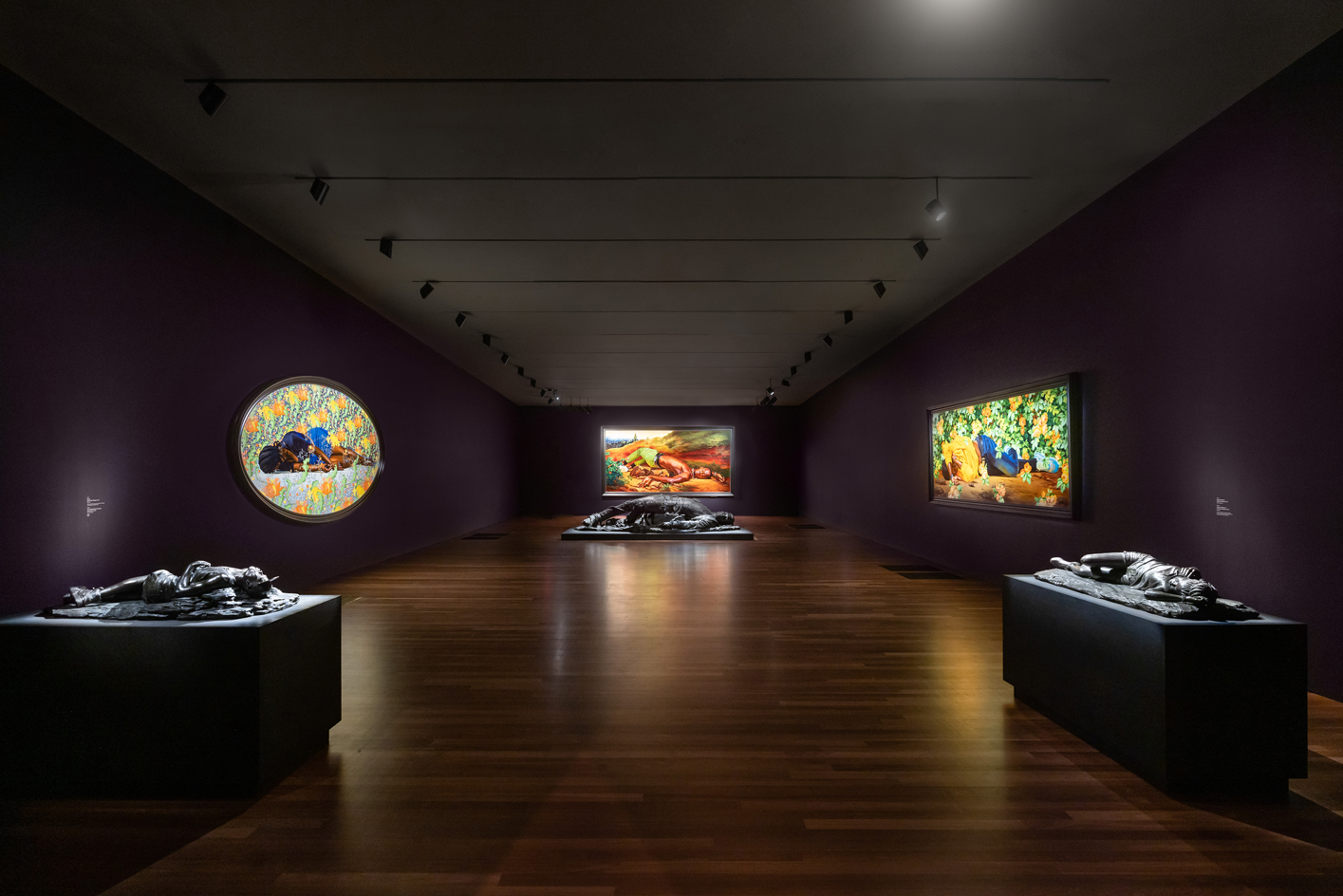
Installation view of 'Kehinde Wiley: An Archeology of Silence', de Young Museum, San Francisco, 2023
‘An Archaeology of Silence’ expands on an earlier series, Down, that Wiley made in 2008 – a group of large-scale portraits of young Black men, inspired by Hans Holbein the Younger’s The Dead Christ in the Tomb (1521-1522), which prompted Wiley’s still ongoing investigations into the iconography of death and sacrifice in Western art across mythological, religious and historical subjects. The new works reframe the artist’s observations to also confront the legacies of colonialism through the visual trope of the fallen figure. The resulting works are of Black people struck down, wounded, in repose or dead, each referencing a historical painting of saints, martyrs and heroes to underscore the cycle of violence against Black and Brown people.
‘It’s strange how ideas are not just play things, but have consequence in the world,’ says Wiley, during a preview of the works ahead of the opening. ‘To go from just being here messing around with oil paint to being able to engage powers and principalities and tendencies that exist out there in the real world. This seemingly casual act of making paintings can actually really be quite consequential.’
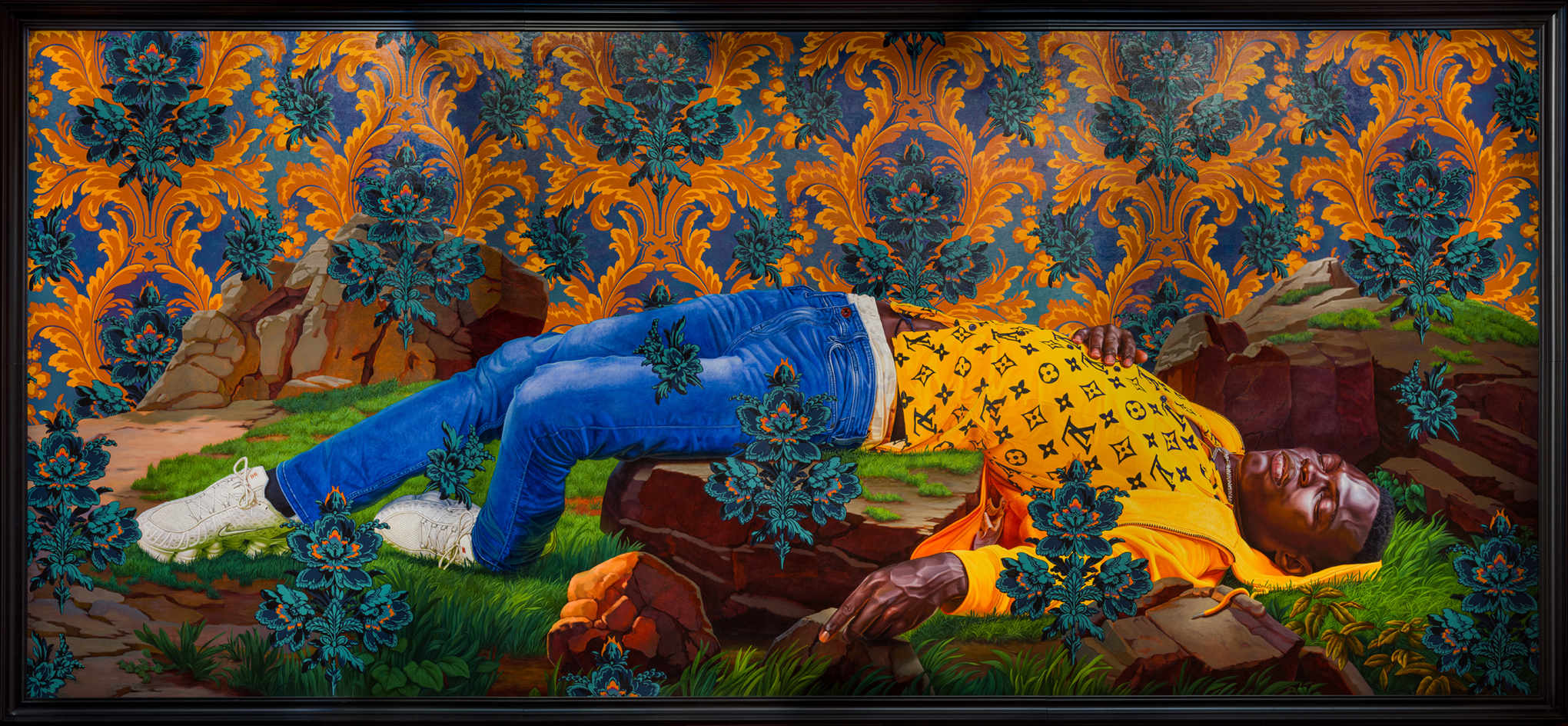
Kehinde Wiley, Femme piquée par un serpent (Mamadou Gueye), 2022

Kehinde Wiley, The Dead Toreador (Sophie Ndiaye), 2021
He says, ‘When I first started painting, I was basically naval-gazing and trying to make stuff that satisfied conceptual arguments that existed at Yale or that I read in books. Then I came out at the Studio Museum in Harlem and started to move in a different direction. Slowly, I started fashioning this language about power, authority and dignity that is a lot more about looking out and it became more about how we sit in the world.’
The works in ‘An Archaeology of Silence’ are some of the largest and smallest that Wiley has ever created. Using scale to elevate their subjects to hero status, the works range from figurative bronze sculptures that hauntingly depict grief, pain and mourning to vibrantly, flower-filled portraits featuring residents, staff and friends of Black Rock, the residency which the artist founded in 2019 in Senegal and where he spent most of lockdown. Filled with personal markers of Senegalese and West African culture, especially in the depiction of hair, these portraits comment on the deep roots of systemic oppression and violence that Black and Brown people endure all around the world.
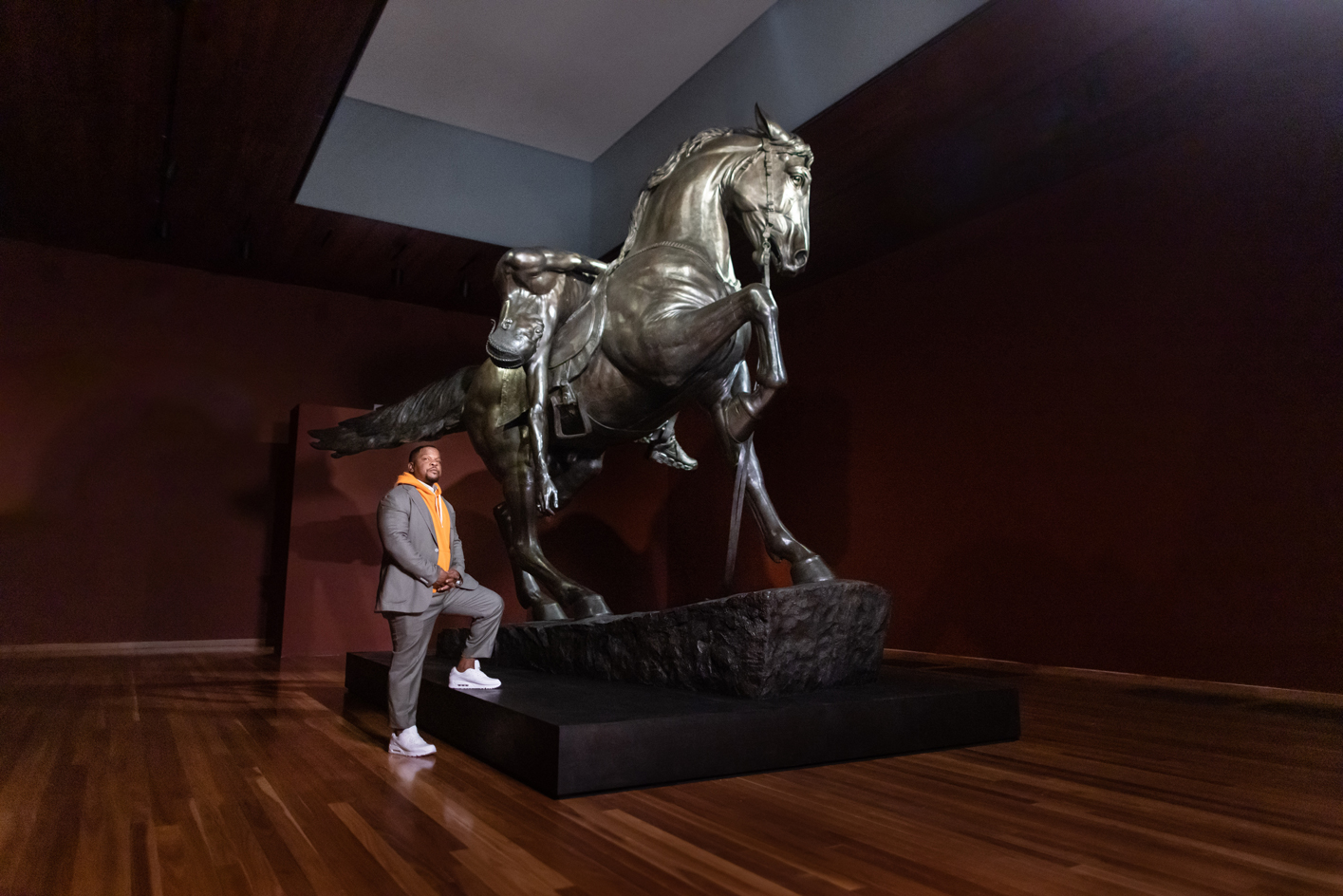
Kehinde Wiley in 'Kehinde Wiley: An Archeology of Silence' at the de Young Museum with sculpture An Archeology of Silence, 2021
A significant aspect of the show is the museum’s demonstration of reverence and sensitivity towards the subject matter. Thanks to a $1 million grant from the Ford Foundation, public programming and interventions from community partners who work in the areas of restorative justice and human rights have been incorporated to inform visitors’ experience. The museum’s Textile Arts gallery, just adjacent to the exhibition space, has also been designated as a respite room, where visitors can collect themselves and their thoughts before or after viewing the works.
Receive our daily digest of inspiration, escapism and design stories from around the world direct to your inbox.
An additional $1 million grant from Google.org also makes the exhibition more accessible to the Bay Area community, by enabling the museum to offer eight weekends of free admission. This grant also supports a free audio guide, public programming such as a talk with the artist, grief workshops, school and youth curriculum, an exhibition film, and an ongoing community engagement speaker series presented in partnership with LiveFree – an SF organisation working to end the gun violence, mass incarceration, and the criminalisation of Black and Brown people.

Kehinde Wiley, The Virgin Martyr St. Cecilia (Ndey Buri). Installation of 'Kehinde Wiley: An Archaeology of Silence'

Kehinde Wiley, Sleep, (Mamadou Gueye), 2021 Bronze. Installation of 'Kehinde Wiley: An Archaeology of Silence' at the de Young Museum
Kehinde Wiley: 'An Archaeology of Silence' runs from 18 March – 15 October 2023 at the de Young Museum, San Francisco. famsf.org
Pei-Ru Keh is a former US Editor at Wallpaper*. Born and raised in Singapore, she has been a New Yorker since 2013. Pei-Ru held various titles at Wallpaper* between 2007 and 2023. She reports on design, tech, art, architecture, fashion, beauty and lifestyle happenings in the United States, both in print and digitally. Pei-Ru took a key role in championing diversity and representation within Wallpaper's content pillars, actively seeking out stories that reflect a wide range of perspectives. She lives in Brooklyn with her husband and two children, and is currently learning how to drive.
-
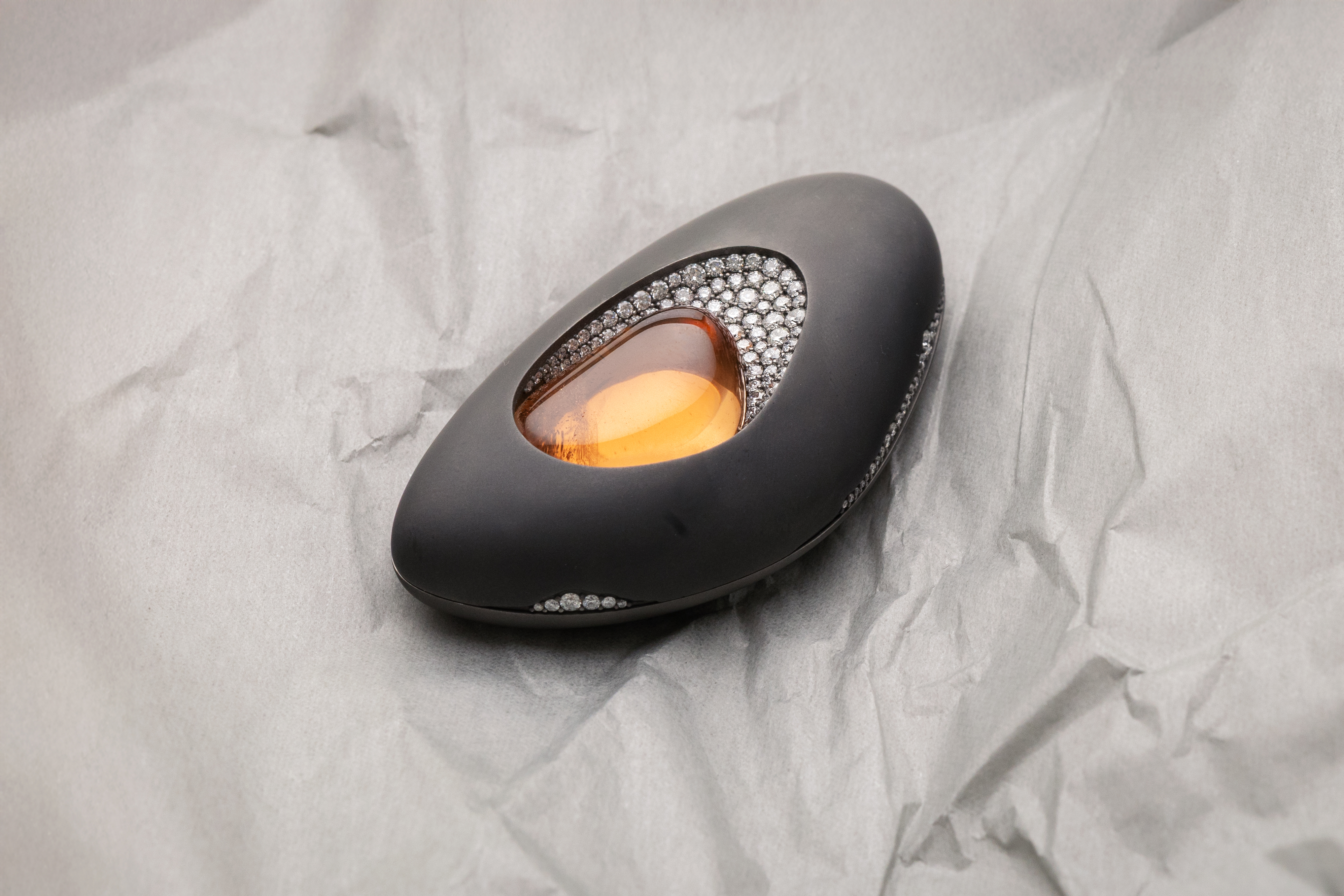 Discover the cool and offbeat designs of jeweller Inesa Kovalova
Discover the cool and offbeat designs of jeweller Inesa KovalovaInesa Kovalova's jewellery celebrates a mix of mediums and materials
-
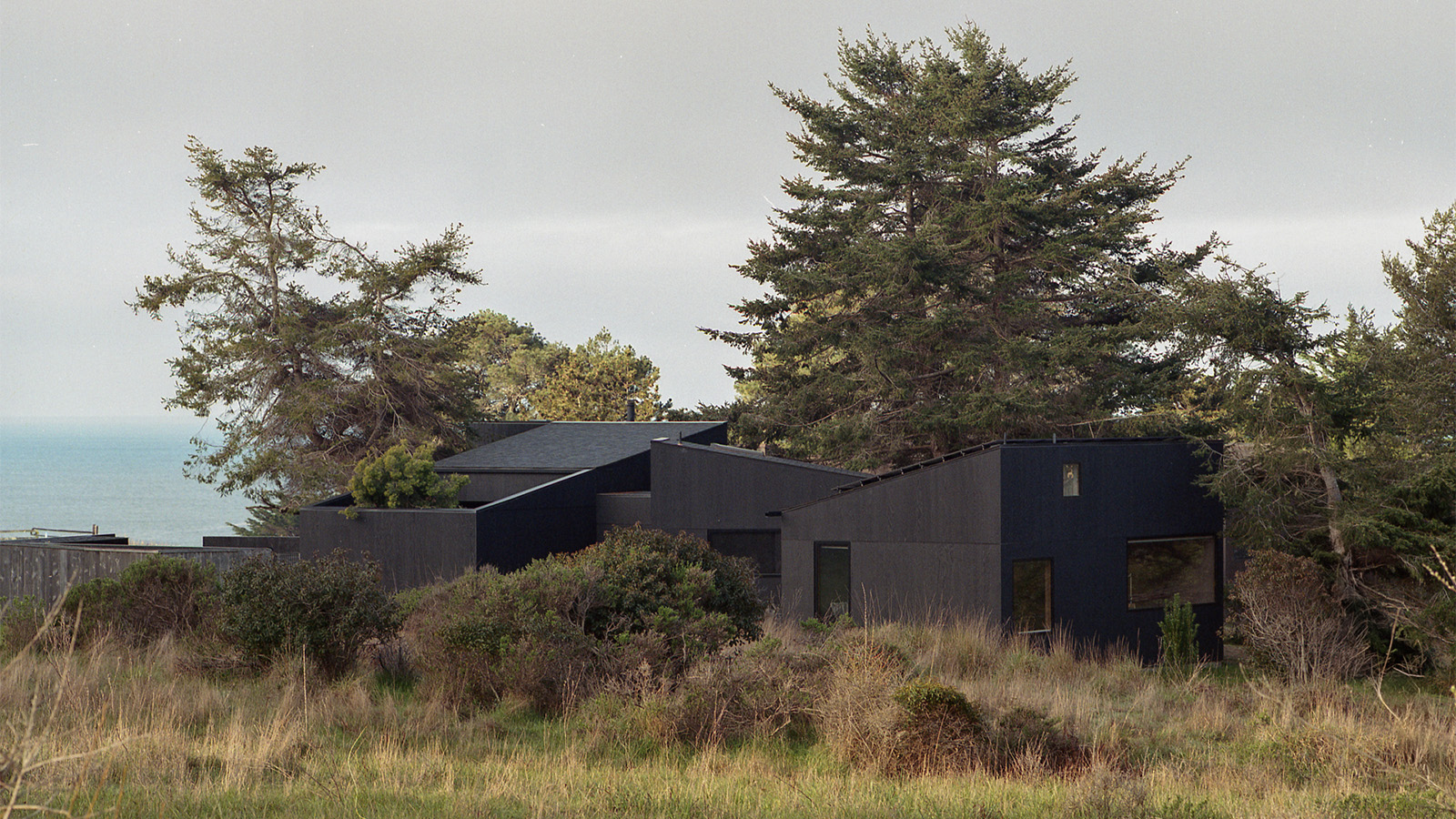 A group of friends built this California coastal home, rooted in nature and modern design
A group of friends built this California coastal home, rooted in nature and modern designNestled in the Sea Ranch community, a new coastal home, The House of Four Ecologies, is designed to be shared between friends, with each room offering expansive, intricate vistas
-
 Men’s Fashion Week A/W 2026 is almost here. Here’s what to expect
Men’s Fashion Week A/W 2026 is almost here. Here’s what to expectFrom this season’s roster of Pitti Uomo guest designers to Jonathan Anderson’s sophomore men’s collection at Dior – as well as Véronique Nichanian’s Hermès swansong – everything to look out for at Men’s Fashion Week A/W 2026
-
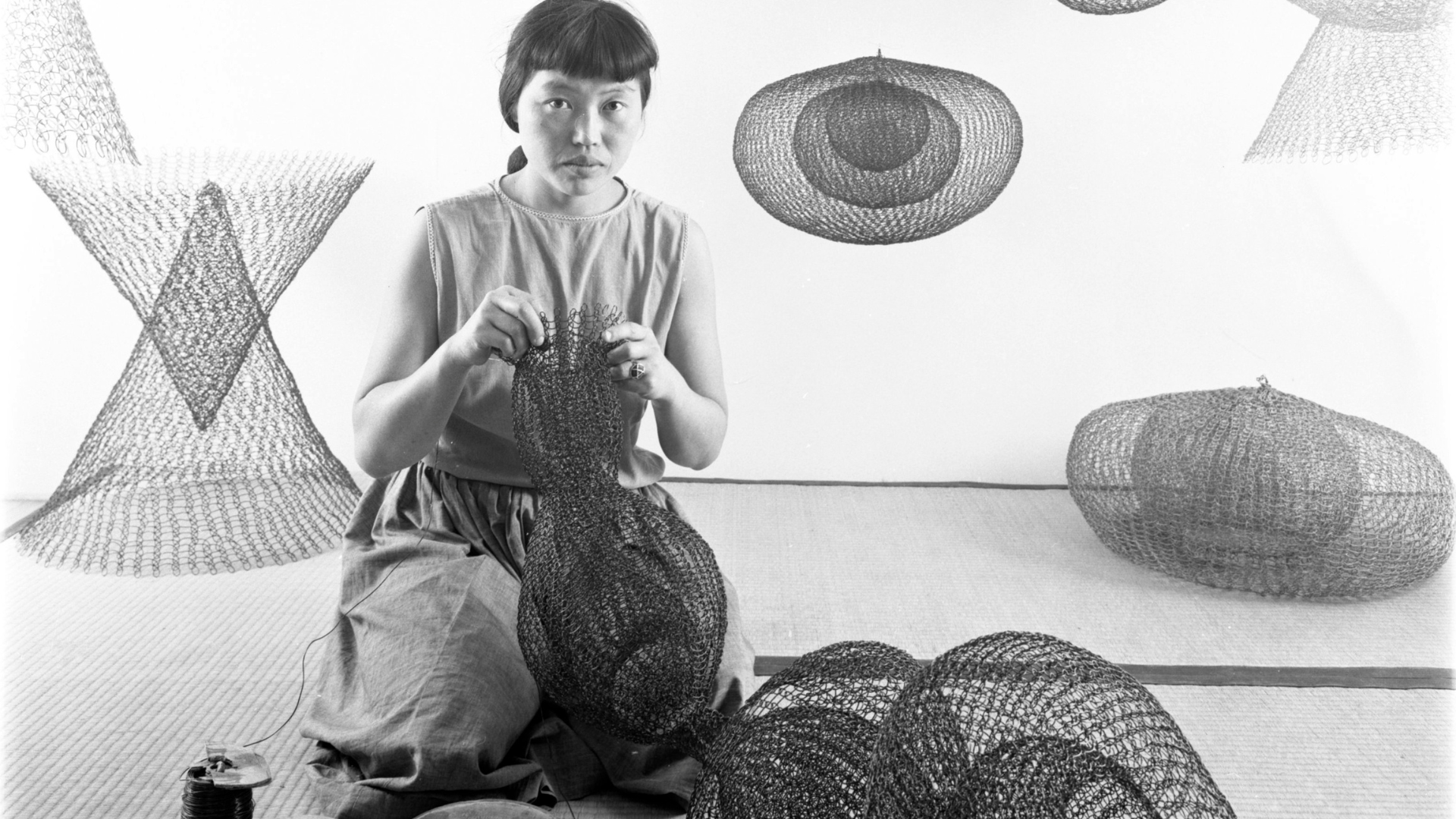 The best Ruth Asawa exhibition is actually on the streets of San Francisco
The best Ruth Asawa exhibition is actually on the streets of San FranciscoThe artist, now the subject of a major retrospective at SFMOMA, designed many public sculptures scattered across the Bay Area – you just have to know where to look
-
 San Francisco’s controversial monument, the Vaillancourt Fountain, could be facing demolition
San Francisco’s controversial monument, the Vaillancourt Fountain, could be facing demolitionThe brutalist fountain is conspicuously absent from renders showing a redeveloped Embarcadero Plaza and people are unhappy about it, including the structure’s 95-year-old designer
-
 First Fraenkel Film Festival in San Francisco: what to see
First Fraenkel Film Festival in San Francisco: what to seeThe Fraenkel Film Festival, at the Roxie Theater in San Francisco, sees ten Fraenkel gallery artists choose films that impact their work
-
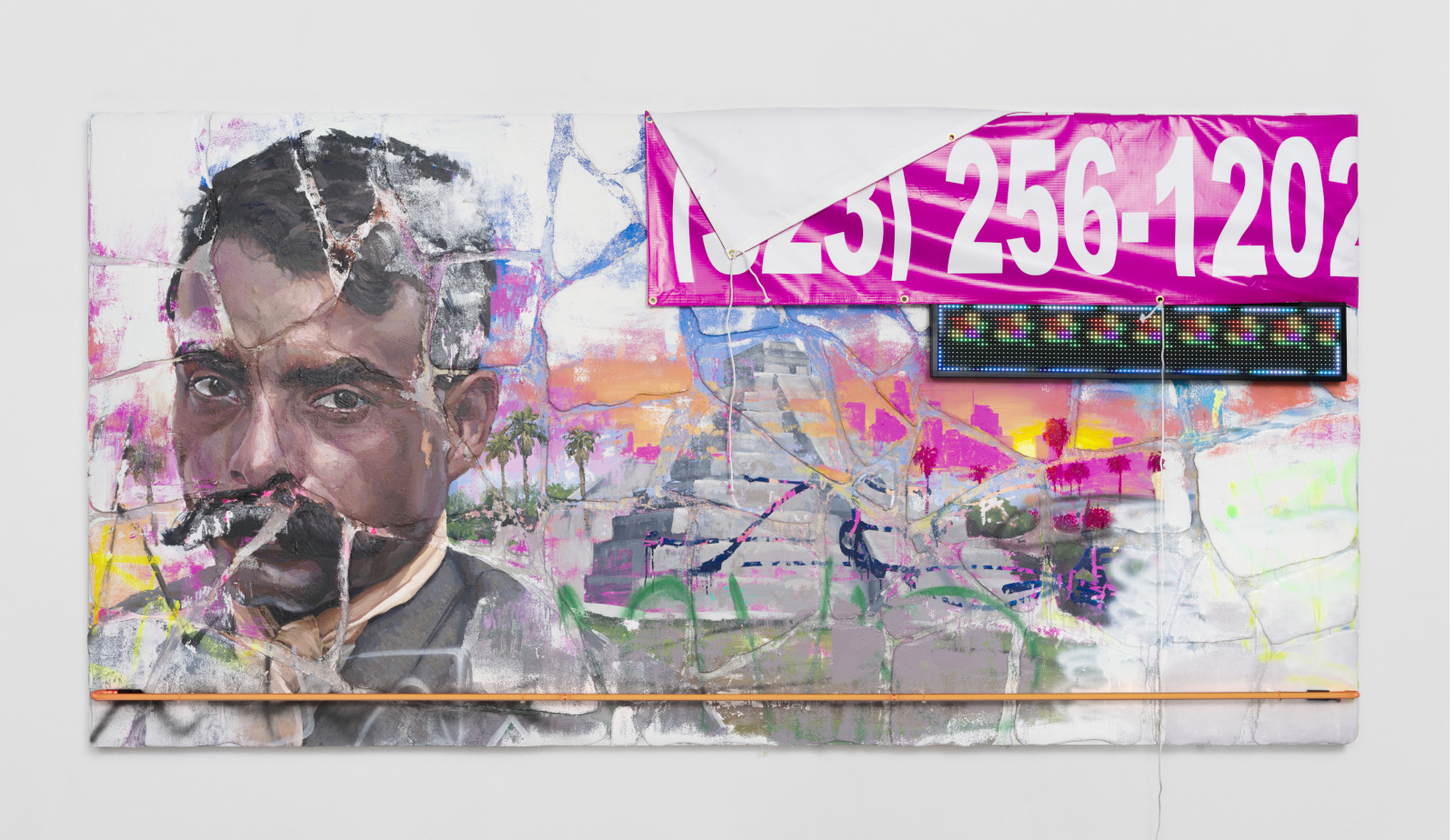 Patrick Martinez captures the passage of time in neon lights and graffiti, at ICA San Francisco
Patrick Martinez captures the passage of time in neon lights and graffiti, at ICA San FranciscoLA artist Patrick Martinez’s ‘Ghost Land’ is his most expansive presentation to date, on show at the Institute of Contemporary Art San Francisco
-
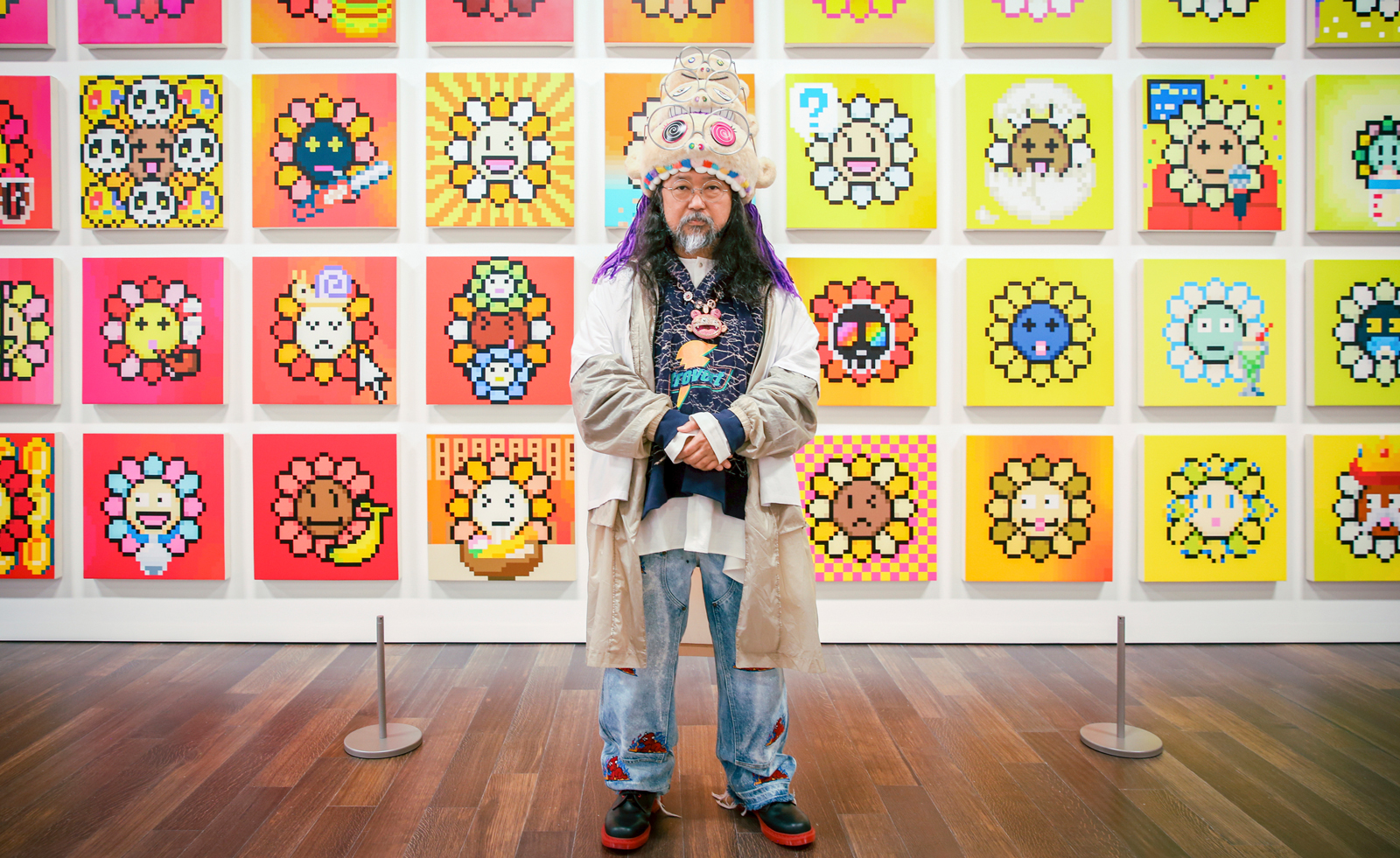 Takashi Murakami on his monsterizing San Francisco show
Takashi Murakami on his monsterizing San Francisco showTakashi Murakami tells us of pandemic-inspired creatures, eye-popping flowers, and NFTs as he explains the making of his exhibition at Asian Art Museum in San Francisco
-
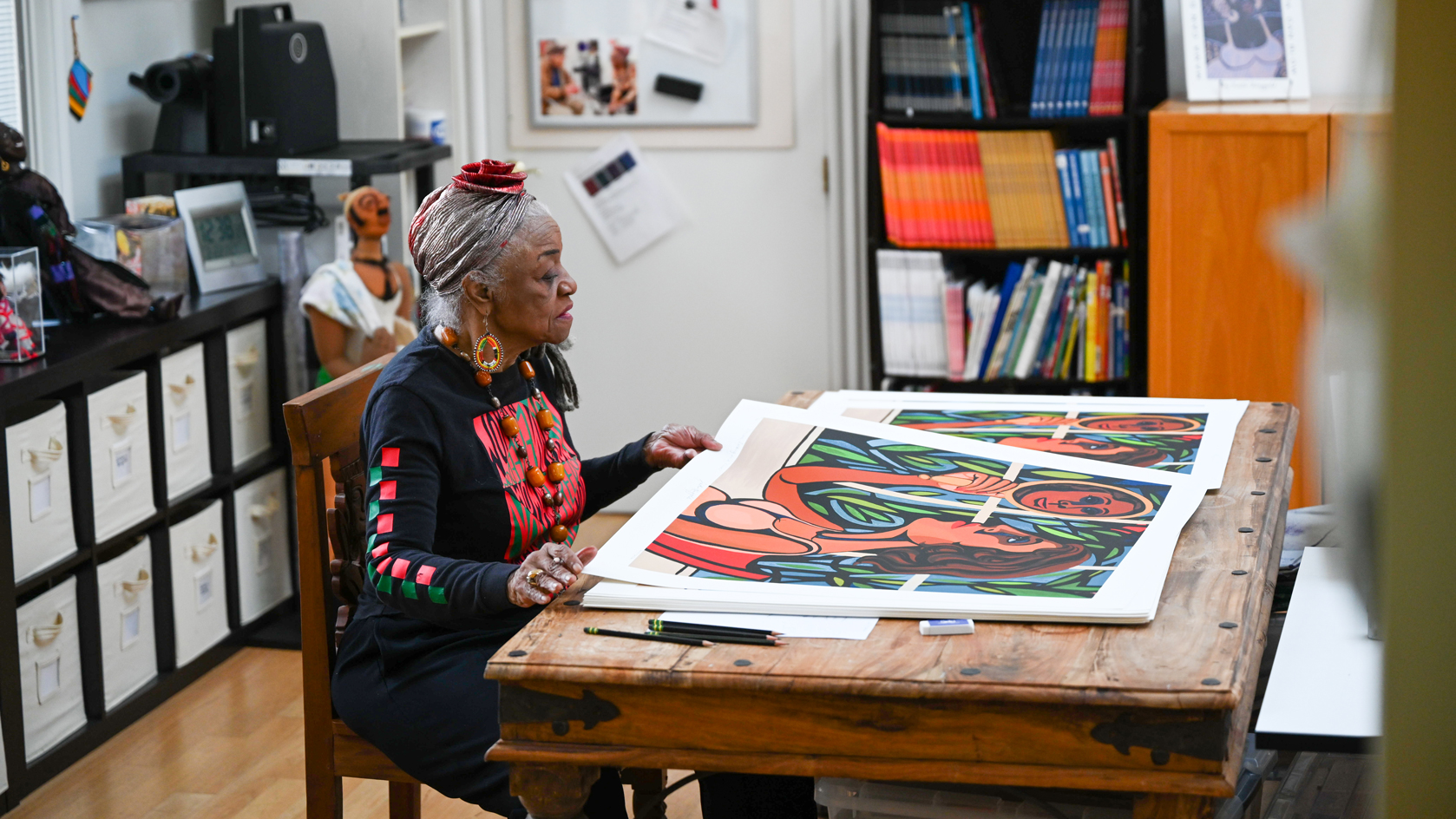 Faith Ringgold on capturing the complexity of the American experience: ‘It takes courage to be free’
Faith Ringgold on capturing the complexity of the American experience: ‘It takes courage to be free’We interview Faith Ringgold, whose major retrospective exhibition ‘American People’ runs until 27 November at the de Young Musuem, San Francisco
-
 San Francisco’s Museum of the African Diaspora reopens with Billie Zangewa and Amoako Boafo
San Francisco’s Museum of the African Diaspora reopens with Billie Zangewa and Amoako BoafoReopening for the first time since the onset of Covid-19, San Francisco’s Museum of the African Diaspora is staging epic exhibitions by Amoako Boafo and Billie Zangewa
-
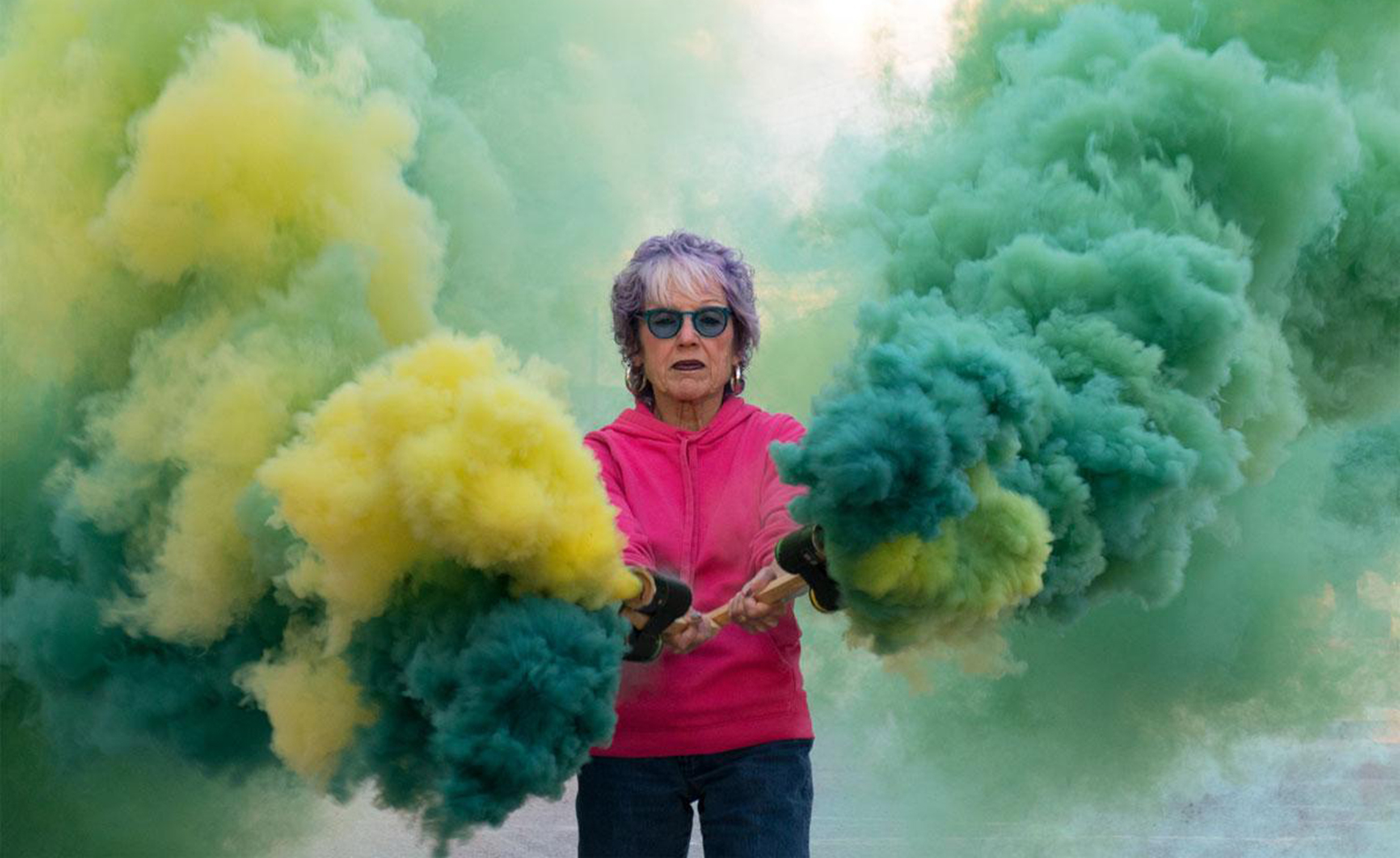 ‘I just didn’t fit’: feminist icon Judy Chicago on revolutionising art history
‘I just didn’t fit’: feminist icon Judy Chicago on revolutionising art historyAt the de Young Museum, San Francisco, American feminist artist Judy Chicago staged her first ever retrospective. We spoke to the artist about her epic career, filled with patriarchal battles, fierce self-belief, and a lot of smoke